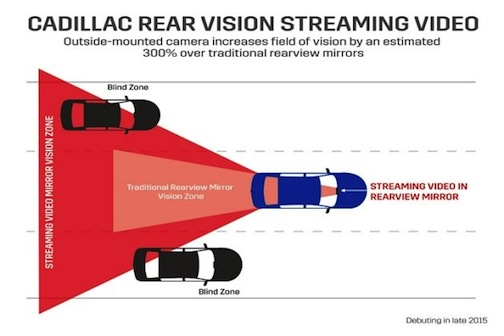When’s the Last Time a Rear-view Mirror Made the News?
Posted on Oct 12, 2021 in Safety | Comments Off on When’s the Last Time a Rear-view Mirror Made the News?

The first backup camera ever invented was made of glass and adhered to the front windshield. It was called a rear-view mirror. I looked toward Wikipedia for more history on the veritable safety device, because there just isn’t much chatter about them these days. Here’s what I found:
The earliest known rear-view mirror mounted on a motor vehicle appeared in Ray Harroun’s Marmon racecar at the inaugural Indianapolis 500 race in 1911. Although Harroun’s is the first known use of such a mirror on a motor vehicle, Harroun himself claimed he got the idea from seeing a mirror used for a similar purpose on a horse-drawn vehicle in 1904. Harroun also claimed that the mirror vibrated constantly due to the rough brick surface, rendering it largely useless.
Elmer Berger is usually credited with inventing the rear-view mirror, though in fact he was the first to patent it (1921) and develop it for incorporation into production streetgoing automobiles by his Berger and Company.
So there you have it. The rear-view mirror hasn’t made the news since about 1921.
Leave it Cadillac to make the rear-view cool again.
In fact, Cadillac’s idea takes the “mirror” part out altogether and replaces it with a video screen that streams a live view of what’s behind the driver. Cool? Or is this another case of technology going too far to replace something that works just fine?
Before you make you decision, read a little more about the technology:
The new rearview mirror will be a 1280 by 240-pixel TFT-LCD display with 171 pixels per inch providing a feed from a specially-designed HD camera. Not only does it have that hydrophobic coating, but it’s also been designed to enhance rear view lane width and provide a better image in low-light situations. The 2016 Cadillac CT6 will be the first vehicle to sport this new rearview mirror.
So instead of looking into the mirror and seeing the back seats and your happy children’s smiling faces, you’ll have an unobstructed view of the traffic situation behind you.
If you’d rather bypass the streaming video, you can flip a switch and go back to a traditional mirror.
I like the idea of the streaming video, but my experience with a backup camera has taught me that road grime can accumulate awfully quickly and render the video feed useless. The results could be disastrous if that happened to a rear-view mirror. If I had this technology, I’d use the video feed on sunny days, and the regular mirror during rain and snow.




